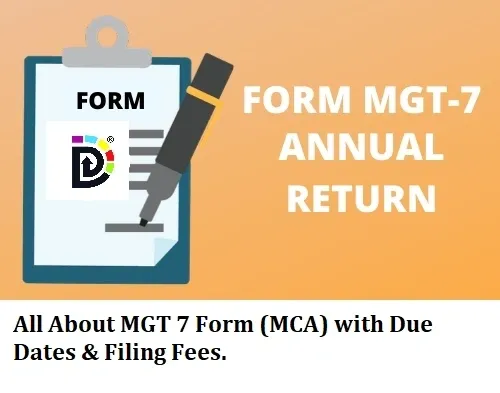How Can I Ensure My Tax Code Is Correct to Avoid Overpayment?

Understanding and verifying your tax code is essential for ensuring you pay the right amount of tax and avoid overpayment. A tax code determines how much tax is deducted from your income, and errors in it can lead to unnecessary financial strain. This blog will guide you through the process of understanding tax codes, checking their accuracy, correcting errors, and ensuring you don’t overpay.
What Is a Tax Code and Why Does It Matter?
Contents
- What Is a Tax Code and Why Does It Matter?
- How to Understand Your Tax Code
- Common Errors in Tax Codes
- Steps to Ensure Your Tax Code Is Correct
- What to Do If Your Tax Code Is Wrong
- How to Avoid Future Tax Code Issues
- Case Study: Correcting a Tax Code
- Comparison Table: Key Tax Codes and Their Implications
- FAQs on Tax Codes
- Conclusion
A tax code is a combination of letters and numbers used by tax authorities to calculate the tax-free portion of your income. The remaining amount is subject to tax deductions.
For example:
- In the UK: A common tax code might be “1257L,” which indicates that the taxpayer has a tax-free allowance of £12,570 for the year.
- In the US: While the tax system operates differently, understanding your withholding status (via W-4 forms) serves a similar purpose.
Why It’s Important
- Prevent Overpayment: An incorrect tax code could mean paying more tax than necessary.
- Avoid Underpayment: Errors might lead to underpaying, resulting in penalties or unexpected bills later.
- Maintain Cash Flow: Keeping more of your income ensures better financial management.
How to Understand Your Tax Code
1. Components of a Tax Code
Tax codes often include:
- Numbers: Represent the tax-free allowance.
- Letters: Indicate specific circumstances like age, benefits, or additional income sources.
2. Where to Find It
Your tax code is typically found on:
- Payslips: Provided by your employer.
- Tax Notices: Sent by tax authorities, such as HMRC in the UK or the IRS in the US.
- Pension Slips: If applicable.
Common Errors in Tax Codes
Mistakes in tax codes can occur due to:
- Incorrect Personal Allowance: Failing to account for your tax-free income properly.
- Multiple Jobs: Not allocating allowances correctly across multiple sources of income.
- Changes in Circumstances: Marriage, job changes, or benefits may not have been updated.
- Benefits in Kind: Company-provided perks like cars or accommodation not reflected accurately.
- Tax Reliefs Not Included: Missing claims for reliefs like work expenses or professional fees.
Steps to Ensure Your Tax Code Is Correct
1. Review Your Tax Code
Check your tax code against your income and personal circumstances:
- UK: Use HMRC’s online tool or personal tax account.
- US: Refer to your W-4 form and IRS Withholding Calculator.
- Other Regions: Check your tax authority’s guidelines.
What to Check:
- Does the tax code match your personal allowance?
- Have any changes in income or benefits been reflected?
- Are deductions for benefits in kind accurate?
2. Verify Your Income Details
Ensure your income information matches the records held by tax authorities. Cross-check:
- Salary details with your employer’s payroll records.
- Other income sources like pensions, investments, or rental earnings.
3. Notify Tax Authorities of Changes
Inform your tax authority about any significant changes in your circumstances:
- Starting a new job.
- Getting married or divorced.
- Claiming benefits or additional allowances.
4. Claim Tax Reliefs
Maximize your allowances by claiming reliefs for:
- Work Expenses: Uniforms, tools, or travel expenses.
- Charitable Contributions: Tax relief for eligible donations.
- Pension Contributions: Check if your contributions are accounted for correctly.
5. Use Online Tools
Leverage online calculators and portals provided by tax authorities:
- UK: HMRC’s Personal Tax Account or Tax Code Calculator.
- US: IRS Withholding Calculator or updated W-4 forms.
6. Consult with a Tax Professional
If your tax situation is complex, a tax advisor can:
- Ensure accurate allocation of allowances.
- Identify potential errors or missed reliefs.
- Liaise with tax authorities on your behalf.
What to Do If Your Tax Code Is Wrong
If you suspect your tax code is incorrect:
- Contact Tax Authorities: Reach out to HMRC, IRS, or your regional tax office.
- Provide Documentation: Supply payslips, benefit statements, and other relevant documents.
- Request Adjustments: Ask for corrections and backdated refunds if applicable.
- Follow Up: Ensure the updated tax code reflects on your next payslip.
How to Avoid Future Tax Code Issues
- Regular Reviews: Check your tax code annually or whenever there’s a significant change in circumstances.
- Stay Updated: Follow announcements about tax thresholds and allowances.
- Use a Checklist: Create a checklist to ensure all income and benefits are accurately accounted for.
- Set Alerts: Many tax authorities allow you to set reminders for updates or reviews.
Case Study: Correcting a Tax Code
Scenario:
Sarah, a UK resident, noticed her tax code was “BR” (Basic Rate), leading to higher deductions. Upon investigation, she realized her second job’s income had been taxed at the higher rate without her personal allowance applied.
Action Taken:
- Sarah logged into her HMRC Personal Tax Account.
- She updated her job details and allocated her personal allowance across both jobs.
- Within weeks, her tax code was corrected, and she received a refund for overpaid tax.
Lesson:
Staying proactive and leveraging tax tools can save time and money.
Comparison Table: Key Tax Codes and Their Implications
| Tax Code | What It Means | Common Use Case |
|---|---|---|
| 1257L | Standard personal allowance (£12,570 in the UK) | Most taxpayers |
| BR | Basic rate tax applied to all income | Second jobs, without personal allowance |
| 0T | No personal allowance; taxed at full rate | No P45 or allowances used up |
| NT | No tax deducted | Foreign income or special arrangements |
FAQs on Tax Codes
1. How often should I check my tax code?
Review it annually or after any major life event (job change, marriage, etc.).
2. Can I claim a refund for overpaid taxes?
Yes, contact your tax authority and provide evidence of the overpayment.
3. What if I have multiple income sources?
Ensure your allowances are split appropriately. Use your tax account or consult with a professional.
Conclusion
Ensuring your tax code is correct is essential for financial well-being. By regularly reviewing your code, understanding its components, and updating it to reflect changes in your circumstances, you can avoid overpayment and keep more of your hard-earned money.
With tools like HMRC’s online portal and the IRS Withholding Calculator, along with professional advice, staying on top of your tax code has never been easier. Take control of your finances today—a little effort now can save you a lot later.






